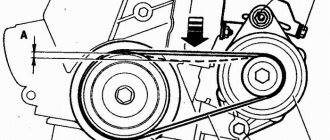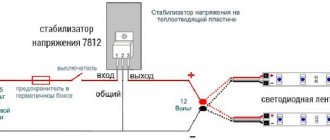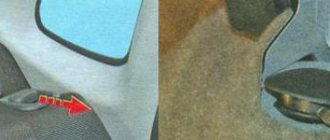It is necessary to unsolder a constant resistance 2 from a variable resistor with a resistance of 10 k, which is responsible for regulating the output voltage. The reason for this deviation in the voltage regulation range was the incorrect setting of the value of the variable resistor, it is necessary 3. Probably, when this batch was produced, this value of variable resistors was not available, perhaps also due to the reduction in cost designs, oddly enough, resistors of the same type but different values differ in price. Hosting from uCoz.
Search for data based on your request:
WATCH THE VIDEO ON THE TOPIC: Repair of the Kulon-715d charger from a subscriber.
Pendant 707a electrical circuit
Forum Rules View forum rules. Added: May 19, , Added: June 11, , Information Discussion of the calendar of events for the year Forum rules.
The 4x4 club forum has been functioning for a year and new members are registered every day, topics and answers appear daily. All forum topics are placed in the appropriate sections for ease of search, but if you cannot find an answer to your question, then use the forum search, you will probably find what you were looking for, and if you have questions about navigating the site or there are inaccuracies or problems on the forum, then let the administration know info a 4×4.
Also, if you can’t do something on the forum, please contact us, we will try to quickly resolve the issues. Last visit: October 9, , Current time: October 9, , Page 1 of 1. Pendant Multifunctional charger The only charger on the market with a Wi-Fi module and the ability to remotely control from a computer, tablet, phone. It has customizable modes of operation as a charger and an adjustable power supply. Has the ability to diagnose and restore batteries.
This device is addressed to advanced users and professionals. The device can operate either in the mode of creating its own Wi-Fi network or connecting to a home Wi-Fi network. In the battery charging and service mode, it is possible to set up to 12 parameters. The device can be used as a regulated power supply with voltage from 1.0 to 16.0 V for low voltage equipment. The operating algorithm ensures correct charging and recovery of even very discharged batteries, as well as safe long-term storage in charge maintenance mode.
The device has manual adjustment of the maximum charging current and limiting voltage. Can be used as a regulated power supply from 6.0V to 15.5V for low voltage electronic and electrical equipment with power supply parameters in accordance with the specifications below. Maximum charge current 15A. The operating algorithm of this charger implements a combined method of charging the battery: operating in current stabilizer mode in the main charge phase with switching to voltage stabilization mode in the final phase, which ensures automatic maintenance of the optimal charge rate, preventing overvoltage that is dangerous for the battery, leading to boiling of the electrolyte.
The charger has an electronic protection circuit that protects the device and battery from overloads and short circuits. The device is protected from polarity reversal when connected by an easily accessible standard automotive fuse. Can be used as a regulated power supply from 6.0V to 15.5V for low voltage electronic and electrical equipment. Maximum charge current 7A. The device has manual adjustment of the charging current and limiting voltage. Can be used in 15.0V power supply mode for low voltage electronic and electrical equipment.
The optimal device for ensuring high-quality battery maintenance. Allows you to restore a severely discharged battery. The Pendant programmable charger is designed to charge all types of batteries - alkaline, gel, AGM, WET, with a voltage of 6 - 12 Volts and a capacity of 1. It can also be used in regulated power supply mode. Has a charge maintenance mode to prevent battery overcharging when used as an uninterruptible power supply for home alarms.
The device is controlled by a microcontroller, which allows for an optimal charging process for any battery. It is possible to restore and charge completely discharged batteries. Depending on the selected parameters, the charging mode is optimal in speed and is safe for the battery and its subsequent maintenance with the charger connected, without a time limit.
The charger is fully controlled by a microcontroller, which allows for a five-stage intelligent charging process for any battery for different operating conditions. Can also be used as a power supply with a voltage of 13.0 V. It has a mode for charging and restoring completely discharged batteries.
After reaching the maximum charge, the device automatically switches to charge maintenance mode with a voltage reduction to 13.6V, intended for safe long-term storage. The charging takes place in a fully automatic mode, ensuring optimal speed and safety of the process. Electronic protection circuit ensures safety against short circuits and overheating.
Optimal combination of price and features. Lightweight and easy to use device. The charger has an indication of the presence of voltage at the output (left green LED) and output current (right three-color LED), for which green corresponds to a low current into the load, yellow to an average current of about 2.5 A, red to the maximum current.
The charger has an operating algorithm that ensures optimal charging speed, while preventing overvoltage that is dangerous for the battery and protecting the battery from overcharging. The device has an electronic protection circuit that provides protection against overloads and short circuits.
Charges the car battery in fully automatic mode. Can be mounted on the wall. If the battery is connected incorrectly (reversing the polarity), which we recommend avoiding, the fuse will burn, both LEDs will remain green, but there will be no voltage at the output terminals.
You should purchase a fuse rated only 7.5 A and install it yourself. The charger should continue to function normally. We recommend that after replacing the fuse, check the charger's open circuit voltage at the output terminals without a connected load. It has overload and short circuit protection of the output terminals.
When connecting a load that consumes more current than the maximum permissible, and short-circuiting the output terminals, the operation of the device will be blocked and automatically restored when the load normalizes. The presence of a highly effective output voltage limiter provides protection for the connected equipment in case of faults.
Possibly for new firmware Topic raised by Johnny June 11, , You cannot start topics You cannot reply to messages You cannot edit your messages You cannot delete your messages You cannot add attachments. Assignment of ranks and titles.
Discussion of the calendar of events for the year Forum Rules.
Charger Pendant 707D
Voltage of charged batteries: 6-12v
Recommended capacity of rechargeable batteries: 7-100A/h
Description: Charger Pendant 707D is designed for charging batteries used in cars, motorcycles, boats, etc. The device has an additional operating mode - power supply. The Pendent-707D charger has a digital liquid crystal indicator that displays charging current and voltage, manual adjustment of charging current and maximum voltage. The device can be used as a regulated power supply. The operating algorithm of the Kulon-707D charger implements a combined method of charging the battery (operation in current stabilizer mode in the main charge phase with switching to voltage stabilization mode in the final phase), which ensures automatic maintenance of the optimal charge rate, preventing overvoltage that is dangerous for the battery, leading to to boiling of the electrolyte. The Kulon-707D charger has an electronic protection circuit that protects the device and battery from overloads and incorrect polarity of the output terminals. A high-speed electronic protection circuit removes voltage from the output terminals when the battery is disconnected, protecting the device from short-circuiting the output terminals. During the charging process of the battery, the device indicator displays the main parameters of the process - charge current, battery voltage and number of Ampere-Hours. Specifications:
- Supply voltage: 160-240V
- Network frequency: 50-60Hz
- Limit voltage: 170…240V
- Power consumed from the network at rated load: 130±10W
- Rated load: 1.7 ohms
- Power consumed from the network without load: no more than: 5W
- Nominal battery capacity: 75 Ah
- Minimum battery capacity: 7.5 Ah
- Power consumed from the network when charging: no more than 150 W
- Effective value of current consumed from the network when charging: no more than 1A
- Maximum battery discharge current when power is turned off: no more than 20 mA
- Nominal open circuit output voltage: 15.0±0.1V
- Minimum open circuit output voltage: 6.0±0.5V
- Maximum value of constant output current: no more than 10A
- Average constant output current at rated load: 7.5±0.5A
- Minimum value of set charging current: 1.3±0.5A
- Resolution of voltage and current readings: 0.1A and 0.1V
- Weighted acoustic noise level: no more than 56 dBA
- Overall dimensions of the case: 153x85x215 mm
The Kulon-707D charger is designed for operation in temperate climates at ambient temperatures from - 25 C to + 35 C and relative humidity up to 80% at + 25 C
Scheme pendant 707d
View full version: Tools, equipment, devices. Battery chargers. Tell me, please, if anyone knows where I can repair the Zhiguli charger? They don’t hire them in TV and radio workshops; they don’t have such diodes or capacitors, I don’t know what they are called. Bought a long time ago, there is no warranty either. As I understand it, the transformer also works for me and hums, like in a transformer booth. But the ammeter needle does not move. Most likely, it broke down. They say that the ammeter is generally a very fragile device.
how to reduce the minimum output voltage of a pendant 715d charger
Modern chargers for car batteries operate using an electronic pulse circuit with automatic charge control, which allows you to charge a car battery in optimal mode without overloading and boiling of the electrolyte. In automatic mode, the charging current decreases as the battery becomes charged. Charging of car batteries, as well as batteries of a similar type, takes place in the same mode. For lead-acid batteries, a voltage of 14 - 15.5 Volts is supplied; when charging AGM, gel batteries, the charge voltage is limited to 14.5 V. Automatic chargers for batteries with a voltage of 6, 12, 24, 36, 48 Volts can charge either one or several batteries at once, to select a device it is necessary to take into account the charging current and voltage. Chargers of the Kulon - d series are designed for charging batteries used in cars, motorcycles, and boats. Chargers have a digital liquid crystal indicator that displays charging current and voltage, manual adjustment of charging current and maximum voltage. Designed for automatic charging of batteries used in cars, motorcycles, and boats.
The latest Tweets from Svetlana Malakhova (@mysuccessmy): “all-audio.pro cDpvGC2xtY circuit diagram of the Coulomb A charger.”
Charger Kulon-707 d
Kulon-707d Documentation Technical characteristics Chargers of the Kulon – 707d series are designed for charging batteries used in cars, motorcycles, boats, etc. The devices have an additional operating mode - power supply. Chargers of the Kulon - 707d series have a digital liquid crystal indicator that displays the charging current and voltage, manual adjustment of the charging current and maximum voltage. Chargers of the Pendant series - 707d can also be used as an regulated power supply. The operating algorithm of chargers in this series implements a combined method of charging a battery (operation in current stabilizer mode in the main charge phase with switching to voltage stabilization mode in the final phase), which ensures automatic maintenance of the optimal charging rate, preventing overvoltage that is dangerous for the battery, leading to boiling of the electrolyte. Specifications
Rated supply voltage 220 V with a frequency of 50 Hz Limit voltage 170 ... 240 V Power consumed from the network at rated load 130 ± 10 W Rated load 1.7 Ohm Power consumed from the network without load no more than 5 W Nominal battery capacity 75 A*hour Minimum battery capacity 7.5 A*hour Effective value of the current consumed from the network when charging no more than 1A Maximum battery discharge current when the power is turned off no more than 20 mA Nominal value of the no-load output voltage 15 ± 0.1 V Minimum value of the no-load output voltage 6.0 ±0.5 V Average value of direct current at rated load 7.5 ±0.5 A Minimum value of set charging current 1.3 ± 0.5 A Resolution of voltage and current readings 0.1 A and 0.1 B Level of weighted acoustic noise no more than 56 dBA Overall dimensions of the case 153x85x215 The charger is designed for operation in temperate climates at ambient temperatures from - 25 C to + 35 C and relative humidity up to 80% at + 25 C
All information provided and photos of goods are reference information and may contain inaccuracies. Information on prices is not a public offer, determined by the provisions of Article 437 (2) of the Civil Code of the Russian Federation; the most accurate information can be obtained by phone2 or in our stores.
SIMETA PLUS LLC
Password Help Users Calendar All sections have been read. Pendant d and d, review, questions, modernization. I recently purchased Pendant d and d. Pendant d according to the passport was produced in May, judging by the documents it turned out to be returnable, i.e. At the time of purchase there were no other pendant d in stock, so I decided to purchase it. When opening it, it turned out that the mains fuse had burned out in it; now another bug is soldered in its place. Pendant d produced
Request warehouses. Go to new. I'm looking for a circuit for the Pendant d charger. User menu Petrovith55 View profile Send a private message to Petrovith55 Find more posts by Petrovith











